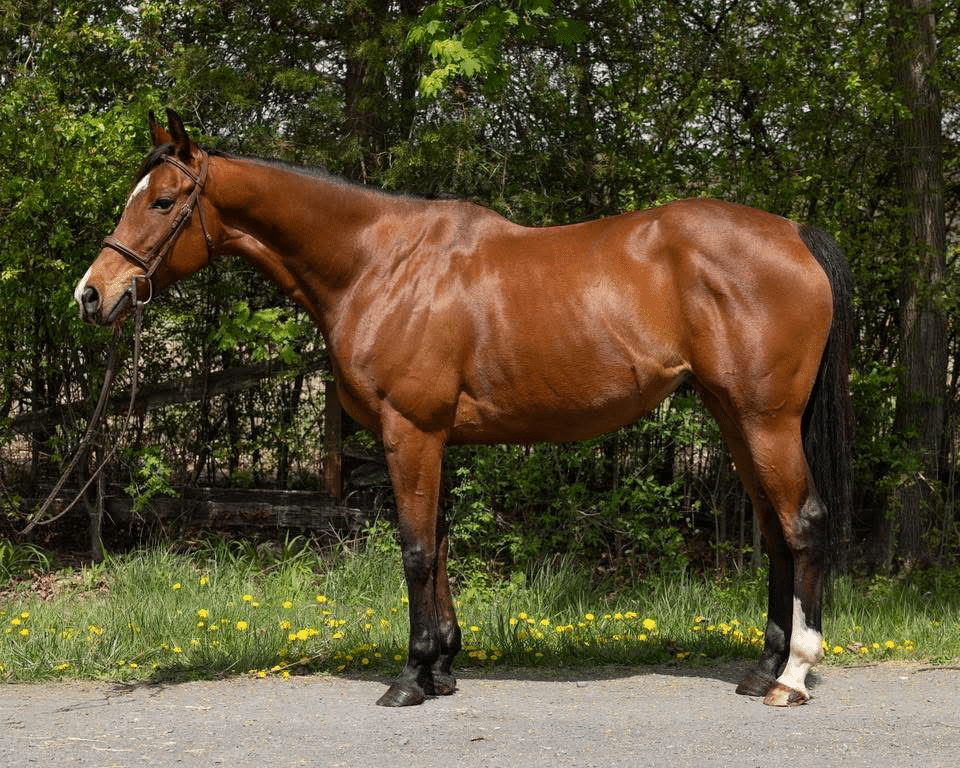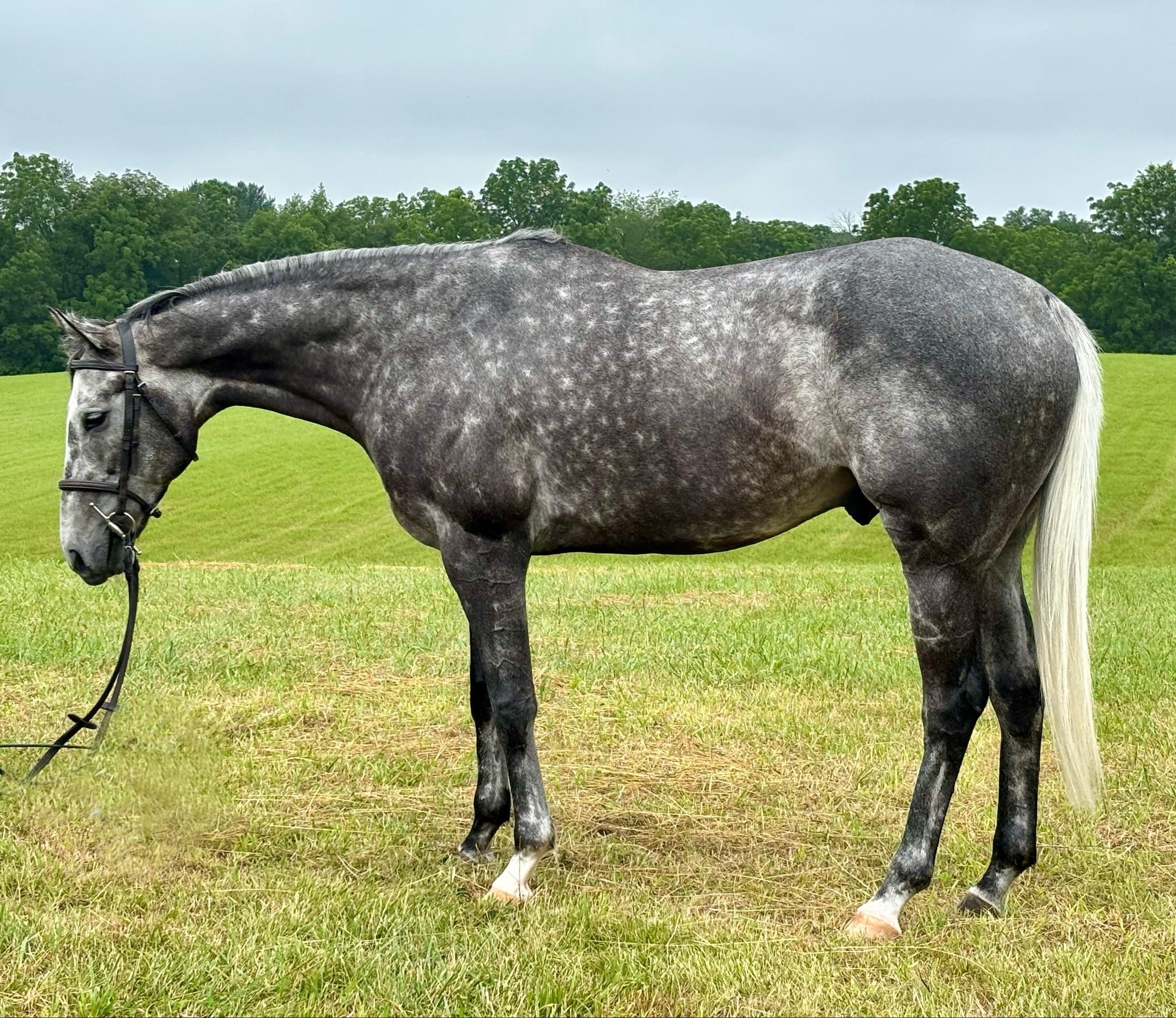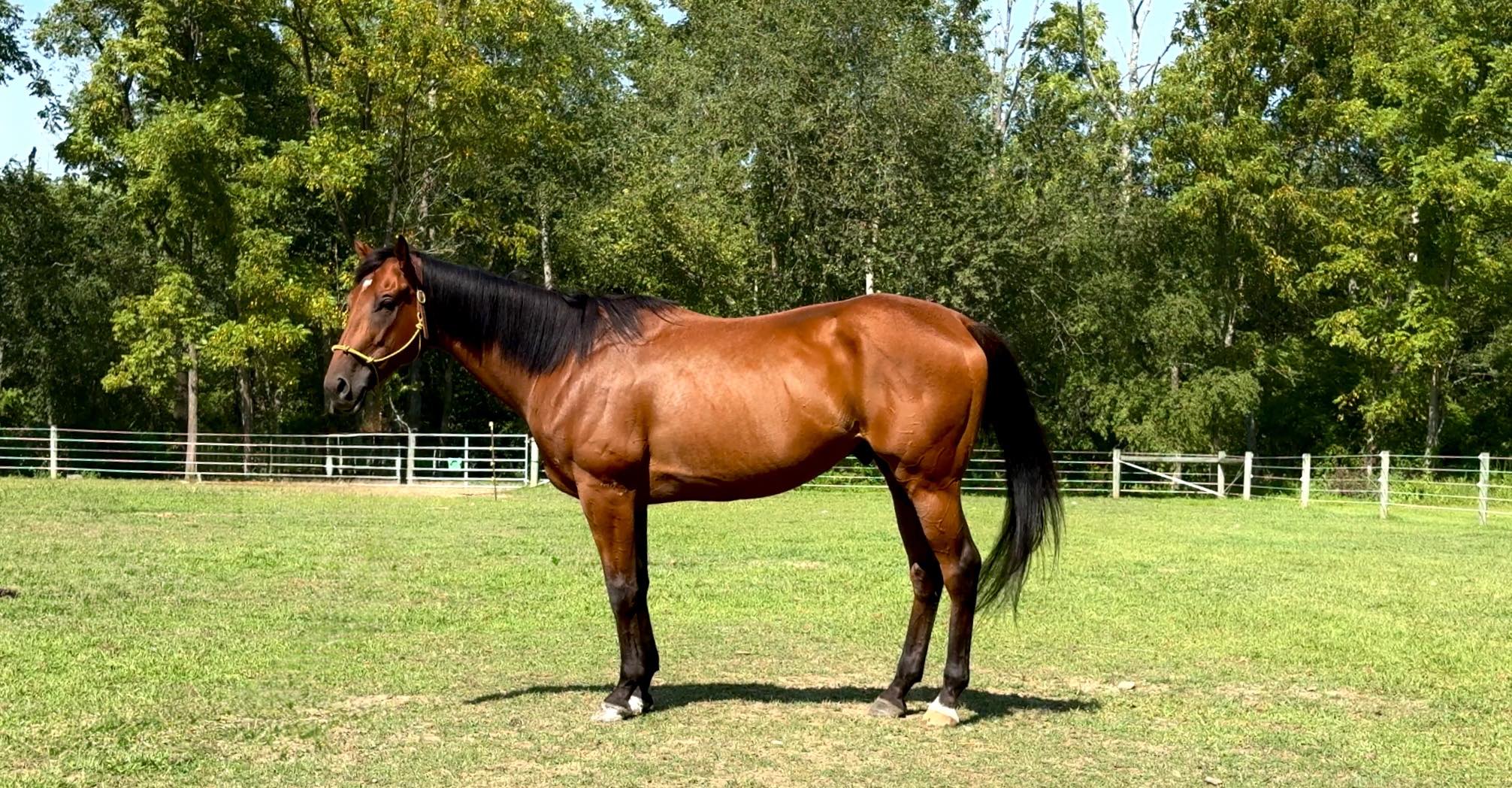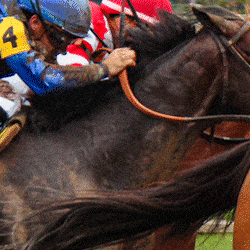Social media, as well as the RRP Horse Listings, have enabled potential Thoroughbred owners to review a large number of retiring racehorse listings at any time. Newcomers to the breed might find it challenging to consider a prospect right off the track and decide if it’s a march for their desired purpose.
In this column, veteran Thoroughbred Makeover trainers share their strategies for assessing and selecting prospects, and evaluate provided conformation photos based on their disciplines of choice. We typically feature trainers from two disciplines in each column, but for this pre-Makeover summer edition, we’ve selected two Thoroughbred Makeover discipline stewards for their takes.
Our Stewards
Eileen Cody
Show Hunter Steward
Eileen Cody first started riding as a middle schooler in a lesson program, then broadened her experience as an undergrad through Alfred University’s equine program. After graduation, Cody moved to Kentucky to pursue a career in the equine industry, and began working for the United States Hunter Jumper Association, managing some of the organization’s educational programs. She’s now embarking on the Thoroughbred retraining journey with her own prospect, a three-year-old gelding by Into Mischief.
Cheryl Microutsicos
Field Hunter Steward
Cheryl Microutsicos, based in Virginia, has been riding for nearly four decades, with about half of those years dedicated to foxhunting. She’s hunted as an honorary whipper-in as well as riding in and leading all flights. Microutsicos has been a longtime steward of the Field Hunter discipline at the Thoroughbred Makeover, lending her expertise to ensure competition runs smoothly.
Choosing a Horse
Both of our stewards are adult amateurs, and don’t shy away from utilizing their networks of professionals and fellow adult amateurs to find their equine partners.
“I think having a strong network of people whose opinions you trust implicitly, both on the horses themselves as well as to give you an honest assessment of how a prospect might fit into your own lifestyle and ability level, is the most important part of the process,” Cody details, while also crediting her location in central Kentucky for making the Thoroughbred shopping process very easy. “My trainer, Nori Scheffel, has a phenomenal eye for horses and is great at understanding and producing Thoroughbreds, and she has helped so many adult amateurs bring along OTTBs for the hunter and jumper disciplines.”
Microutsicos takes a realistic approach to selecting horses: “I rely on my gut to choose them, based on their disposition and suitability. I mostly ask myself ‘can I work with this horse myself?’ since I often ride alone.” Like Cody, she also leans on her network: “I also consult professional trainers, like Tom and Clare Mansmann of Pacific Farms in Hume, VA, to help make sure I’m not missing something important.”
When looking at the horses themselves, Cody ranks a good brain as her first priority. “It can be trickier to assess that in a horse that’s still in race training or just retired, as they are still incredibly fit and might find it hard to contain that energy. But if they are pleasant to handle on the ground and appear to seek out human interaction, that goes a long way.”
“At this point in my riding and hunting career, disposition comes first,” agrees Microutsicos. “I want to enjoy my day out hunting without drama!” She then ranks comfort and soundness, as an equestrian who plans to keep her horses forever. “I want them to stay happy and healthy for years of hunting and riding with me.”
As far as movement, Cody ranks a level, slow-legged way of going as important for her goals in the hunter ring, and is training herself to look through a tight, race-fit horse to see the future. “A swinging, ground-covering walk that tracks up nicely tells me a lot about whether the horse might be a good hunter prospect.”
Microutsicos absorbs everything she hears and reads about bloodlines, and credits her current horse Kitten Street’s breeding for his quiet demeanor, by Kitten’s Joy out of a Street Sense mare. She also has a particular fondness for war horses. “At the end of the day, I want a horse that makes me look forward to every hunt,” she adds. “For me, that always comes down to a kind eye, a steady brain, and the ability to stay sound and comfortable for many seasons. Thoroughbreds always fit the bill!”
Meet the Prospects
Our model horses all come from PTHA’s Turning For Home (TFH), based at Parx Racing in Bensalem, Pennsylvania. Funded by horsemen, jockeys, the Pennsylvania Thoroughbred Horsemen’s Association (PTHA), Parx management, and the Pennsylvania Horse Breeders Association, TFH is the first on-track retirement program at a year-round racetrack. Established in 2008, TFH has become a model for track-based Thoroughbred aftercare, and has ensured the safe placement of over 4,600 Thoroughbreds to date.
TFH works with partner farms across the eastern US to ensure the rehabilitation, retraining and rehoming of horses. The organization also covers necessary surgical procedures for horses retiring from racing, working with local surgeons including Mid-Atlantic Equine Medical Center. While these three horses may no longer be available for adoption at the time of publication, TFH has plenty of prospects looking for their next partner.

Horse 1: Instinctive (Animal Kingdom – Sense of Reality, by Street Sense)

Sugar Gray Leonard (Maclean’s Music – Miss Fontana, by Classic Account)

Liam’s Blue Moon (Air Force Blue – Secret Charm [IRE], by Green Desert)
Cody’s Picks:
Horse 2: This horse screams hunter prospect to me. One of the first things I look for conformationally in a hunter is the lovely sloping shoulder that he demonstrates, as it allows for fluid movement and the ability to lift their front end tidily over a fence, and a longer neck that ties in a bit lower to the shoulder to help balance that movement. He has a strong topline and a good angle to his hindquarters that matches the shoulder and will create a good push from behind. He fits the “rule of three” well, meaning that his front end, middle, and hind end make up balanced thirds of his total body. He’s standing a bit underneath himself behind, but you can still tell that the angles are correct there, and the length from stifle to hock matches the length from hock to ground.
Horse 1: His overall balance is lovely, and his hindquarters have a great slope and power that I think would give him a great push off the ground over a fence. In the front legs, I look to see that if you draw a straight line up from the groove behind their forearm, it would come out in front of their withers, and he is a great example of that. If I’m being picky, he’s just a bit straighter in the hind legs than the first horse, but not significantly so. His back is on the short side, but as a fellow “compact” individual, I don’t really mind this, as I find shorter-coupled horses tend to fit my conformation better. He also has a long underline that balances his shorter back nicely, creating a lovely, typey overall picture of a horse that will be able to carry himself well.
Horse 3: This one is not that far behind my second pick — I would probably like him as more of a jumper type with his lighter, lankier frame. While he’s a little longer in the back, the length from shoulder to hindquarter still matches the height from wither to ground, and I know many jumper riders prefer a horse with a bit more length to the back as it can contribute to a scopier jump. He has a good shoulder angle, and the neck is a bit obscured by his gorgeous mane but it looks like it ties in well to the shoulder. He has nice straight front legs, and again, the line drawn from the crease behind his elbow would come out in front of his withers. I especially like his pasterns, as they’re shorter with a good slope to them that matches the shoulder angle; longer pasterns are always a yellow flag to me for potential strain on the tendons and ligaments down the road.
Microutsicos’ Picks
Horse 1: This horse is my top pick. He has a shorter back that should make him handy in tighter spaces. His legs look clean and sturdy. His hind end looks a little straighter than I’d like, as it can make gaits less smooth, but that would be determined with a test ride. What really draws me in is his overall balance, muscling and kind eye. He looks like he could be a sturdy, forgiving, and reliable partner, which is exactly what I’m looking for as an adult amateur foxhunter.
Horse 2: The grey is handsome and athletic-looking. He has an uphill build and a deep chest. Clare and Tom liked his conformation best, due to overall balance and muscling. His back looks a bit longer, and his pasterns a little more sloping, which could make him a smooth ride. He’s a close second but his color is not one I would choose for myself, due to the high maintenance of hunting a grey horse! (I realize that is not a conformation issue but it’s an issue for me!). He looks like a great choice also, especially for someone with a groom to keep him clean on hunting days.
Horse 3: This bay, while a nice looking horse (aren’t they all?), seems to have the longest back of all which could make it harder to maintain conditioning. His neck is also a little underdeveloped. He looks like he’d be a good choice if you weren’t in a hurry and could take the time to properly develop him. We love his sweet expression and would not discount him at all! He may just require a little more conditioning to see his real potential.

